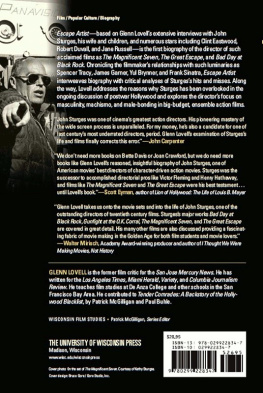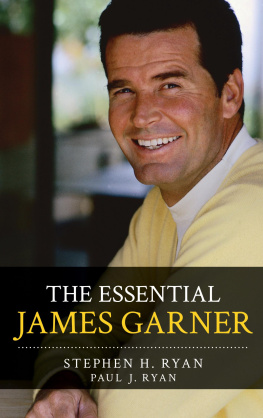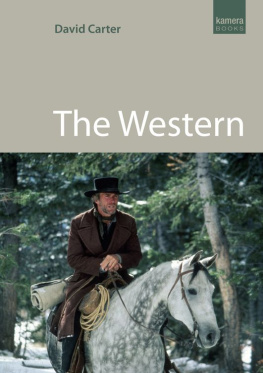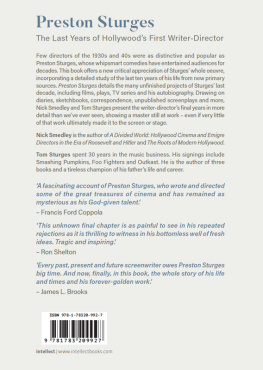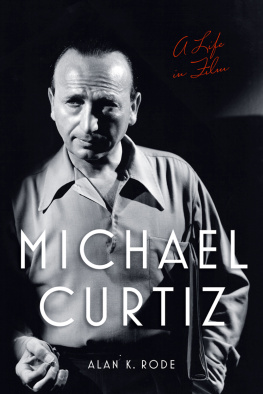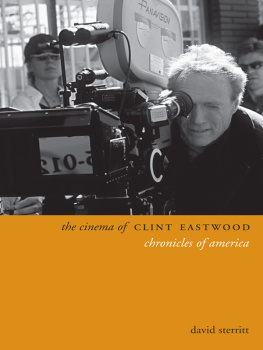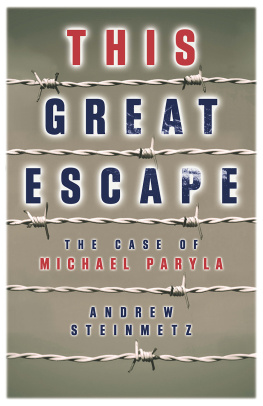Escape Artist
The Life and Films of John Sturges
Glenn Lovell
The University of Wisconsin Press
This book was published with the support of the Anonymous Fund of the College of Letters and Science at the University of WisconsinMadison.
The University of Wisconsin Press
1930 Monroe Street, 3rd Floor
Madison, Wisconsin 53711-2059
www.wisc.edu/wisconsinpress/
3 Henrietta Street
London WC2E 8LU, England
Copyright 2008
The Board of Regents of the University of Wisconsin System
All rights reserved. No part of this publication may be reproduced, stored in a retrieval system,or transmitted, in any format or by any means, digital, electronic, mechanical, photocopying,recording, or otherwise, or conveyed via the Internet or a Web site without written permissionof the University of Wisconsin Press, except in the case of brief quotations embedded in criticalarticles and reviews.
Printed in the United States of America
Library of Congress Cataloging-in-Publication Data
Lovell, Glenn.
Escape artist: the life and films of John Sturges / Glenn Lovell.
p. cm.(Wisconsin film studies)
Includes bibliographical references and index.
ISBN 978-0-299-22830-9 (cloth: alk. paper)
ISBN 978-0-299-22834-7 (pbk: alk. paper)
1. Sturges, John, 19101992.
2. Motion picture producers and directorsUnited StatesBiography.
I. Title. II. Series.
PN1998.3.S779L68 2008
791.4302 33092dc22 2008011967
[B]
For
DONNA,
Magnificent, too
Prologue
The Case for The Other Sturges
J ohn Sturges may be the most popular but least discussed director ofthe postwar era. The man behind such seminal action lms as BadDay at Black Rock, The Magnicent Seven, and The Great Escapehas all but passed beneath the radar of critics and academicianswho laud his more morally ambiguous contemporaries, such as RobertAldrich and Anthony Mann. The stock argument against Sturges, whotoiled on the studio assembly line before proclaiming his independenceas producer-director, is that he was a technically procient popcorn merchant,a plier of escapist entertainment who seldom tackled social issuesor peered deeply into the conicted soul. Further, the argument goes,Sturges, like Robert Wise and Mark Robson, his editing buddies atRKO Pictures, eventually let ego get the better of him, and allowed hislater lmsmost notably Ice Station Zebra and Maroonedto ballooninto ashy and impersonal roadshow attractions. In The American Cinema:Directors and Directions, under the heading Strained Seriousness,Andrew Sarris lumped Sturges with Wise, John Frankenheimer, andStanley Kubrick as a solemn and self-conscious practitioner of the bigaction movie.
Those who have taken the time to review Sturgess full careerfromthe tautly drawn Mystery Street and Jeopardy to the melancholic WyattEarpDoc Holliday reunion Hour of the Gunmay want a secondopinion. To turn another Sarris section heading, Less Than Meets theEye, back on itself, there is more than meets the eye, quite a bit more,to the Sturges oeuvre. A protg of William Wyler and George Stevens,he was a gifted storyteller and keen judge of emerging talent whoworked in just about every genre: besides the signature buddy Westerns,he turned out Gothic romances, period biopics, science-speculationthrillers, and at least one quasi-musical (The Hallelujah Trail). Andwhen CinemaScope arrived, Sturges, whose eyes were never very good,saw its potential for power proxemics. To this day, his minimalist BadDay at Black Rock stands with Elia Kazans East of Eden as the nestearly example of the widescreen process. Its dynamic groupings havebeen quoted by half the action directors in Hollywood, including, mostnotably, Steven Spielberg, John Carpenter, Walter Hill, LawrenceKasdan, and Michael Bay.
To appreciate Sturgess inuence on the revisionist Western, oneneed but draw a line from the Wyatt and Doc of Gunght at the O.K.Corral to the mercenaries of The Magnicent Seven to the mismatchedpaladins of Kasdans Silverado and Clint Eastwoods Unforgiven. Andwhere would Sergio Leone and the spaghetti Western be withoutSturges? For good or ill, their hyperbolic theatricality and mordant sightgags owe as much to the acrobatic gunplay at the O.K. Corral as they doto the anarchic spirit of Sam Peckinpah, who in the 1960s almost teamedwith Sturges for a Magnificent Seven TV series.
Politically, Sturges was a fascinating whirl of contradictionsafunny kind of liberal conservative, in son Michaels words. He calledhimself a professional Democratvery much on the liberal side. InHour of the Gun, he commented on the dehumanizing effects of extra-legallaw enforcement. In McQ, starring John Wayne, he appeared toapplaud police brutality as dispensed to long-haired hippie types. Heprided himself on being fair and open-minded, almost courtly in demeanor,but he also could be as cold and intractable as General Patton.He took a stand against Cecil B. DeMilles communist-smear tactics,was active in both the directors and writers guilds, and contributedgenerously to the ACLUuntil it veered from his prodeath penaltystance. In the early 1970s, he, along with John Lennon, was named toNixons enemies list, and when a reporter called to ask how he felt aboutit, he replied, Honored.
Though he for the most part avoided soapboxes, Sturges did notshy away from thorny issues. In the guise of Saturday-night diversion,he tackled racism (Black Rock, Last Train from Gun Hill, A Girl NamedTamiko), alcoholism (The People against OHara), biological warfare (TheSatan Bug), the abuse of power (Hour of the Gun), and Cold War dtente(Ice Station Zebra). Like Budd Boetticher and Peckinpah, he spent considerabletime south of the border and worked diligently to cast Latinosin strong, non-race-specic roles. Ricardo Montalban, a Massachusettsdetective in Mystery Street and a New York prizeghter in the casuallyinterracial Right Cross, applauded Sturgess courageous refusal to buyinto studio stereotyping.
The portrayal of Sturges as a mans man comfortable only in thepresence of macho types always has smacked of pat generalization. Oncloser inspection we nd the prototypical child of divorce who for therst half of his life seeks the approval and counsel of his mother and then,following her death, indulges an, if not stied, at least suppressed, masculinity.On the set, more than one actress observed he could be stony,distant. By Love Possessed and A Girl Named Tamiko, his 1960s womenspictures, were, in his own words, denite miscues. They also can beseen as unintentional parodies of the form, attributable as much to adesperate-to-appease Hollywood as any lack of directorial nesse withthe opposite sex. Sturges at this point had already directed Ethel Barrymore,Donna Reed, and Barbara Stanwyck in some of their liveliest performances,and later he would pan from Kirk Douglas and John Wayneto shrewd scene stealing by Jo Van Fleet and Colleen Dewhurst.
This bookculled from family albums, letters, production logs, andinterviews with Sturges during the two years prior to his death in1992is offered not as a reappraisal of the action auteur but rather as along-overdue appraisal. The scholarship on John Sturges, often confusedwith Preston Sturges, is as haphazard at it is patronizing. In thewords of assistant director Robert E. Relyea, who would serve as productionchief for Sturgess Alpha Company, Its a crime what has happenedto Johns legacy: Hes the most underrated director in the historyof Hollywood.

